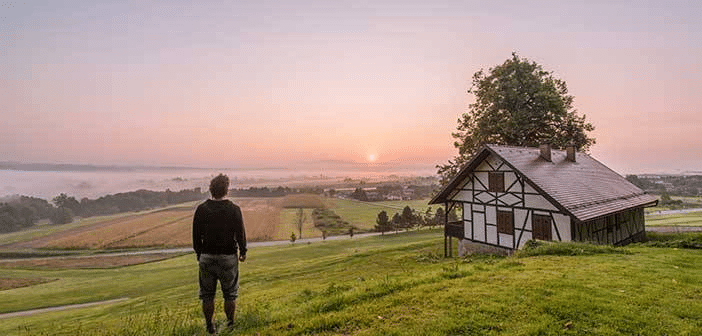Investing in rural real estate

Investing in rural properties is becoming an increasingly attractive option for many investors. This blog explores the benefits and strategies for making wise investments in the countryside.
Whether you're looking for a getaway retreat, a farming venture, or long-term land appreciation, understanding the unique advantages and challenges of rural real estate is key to making informed decisions.
Exploring the Benefits
Investing in less urbanized areas offers numerous benefits, including lower entry costs compared to urban real estate, potential tax advantages, and the possibility of significant long-term capital growth. The tranquility and closer connection to nature also add non-monetary value that attracts a specific segment of investors and residents alike.
Additionally, rural land can provide income streams through agriculture, leasing, and if zoned accordingly, commercial development. This diversity in potential usage further enhances its attractiveness as a multifaceted asset.
Understanding the market trends and the demands of rural living—such as the desire for sustainable living and eco-conscious retreats—can guide investors to make choices that align with both current and emergent needs.
Moreover, technological advancements, including remote work capabilities, are making rural lifestyles more accessible and desirable, potentially increasing property values over time.
Assessing the Challenges and How to Navigate Them
While the benefits are tempting, navigating the intricacies of rural property investment requires keen insight. Zoning laws, access to water, and land management are among the key considerations that can significantly impact the viability and profitability of such investments.
Due diligence is paramount, involving thorough research and possibly consulting with experts like rural estate agents, legal advisors, and agronomists to understand the land's potential and limitations.
Investors should also consider the implications of remote location on resale value, accessibility, and the cost of bringing in utilities or developing infrastructure. Strategic planning and a long-term vision are crucial to overcoming these hurdles.
Spotlight on Sustainability and Eco-Friendly Investments
Aligning investments with sustainable and eco-friendly practices is not only ethically rewarding but can also be economically beneficial. Green investments in rural areas, such as renewable energy projects, organic farming, or eco-tourism, tap into a growing consumer consciousness about sustainability.
Such projects can attract grants, subsidies, and positive community support, enhancing the investment's social and financial returns. They also tend to be more resilient to market shifts that are increasingly sensitive to environmental considerations.
Adopting a mindset of stewardship towards the land can further ensure that it remains a viable asset for generations, preserving both its environmental value and investment potential.
Partnerships with local communities and businesses can facilitate these ventures, offering a mutually beneficial approach to rural development.
Financial Planning and Investment Strategies
Constructing a solid financial plan is crucial. This involves analyzing cash flow possibilities, understanding the tax implications, and securing funding if necessary. Rural investments might also qualify for specific financial incentives or loans designed to encourage rural development.
Investors should employ diversification strategies within their rural real estate portfolio to mitigate risks. This might include investing in different types of properties, locations, and usage to buffer against market fluctuations.
Regular reviews of land value, market trends, and the property’s condition are also essential to ensure the investment remains aligned with your financial goals.
Long-Term Outlook and Exit Strategies
A long-term perspective is vital when investing in rural estates. Market trends in rural areas can differ significantly from urban centers, often requiring patience to realize substantial returns.
Developing an exit strategy early on—whether it involves selling, leasing, or passing the property to heirs—is important for maximizing the investment's value and ensuring that it serves your financial objectives.
Staying informed about regional development plans and engaging with local communities can provide insights and opportunities to adapt your strategy as needed.
Conclusion
Investing in the countryside presents a unique blend of opportunities and challenges. With careful planning, due diligence, and a commitment to sustainability, investors can navigate the rural real estate market successfully. The beauty of rural investments lies not just in their potential financial returns but also in their capacity to offer a retreat back to nature and contribute positively to the environment and local communities.

Related